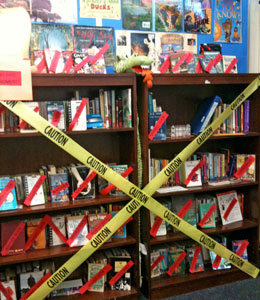‘Tween Crayons & Curfews
Heather Wolpert-Gawron is a middle school English/language arts and speech/debate teacher in San Gabriel Unified School District and a former California regional teacher of the year. Her popular blogs at Edutopia and TweenTeacher are frequently highlighted in various SmartBrief Education newsletters and other nationally circulated ed resource publications. Her first full-length book, ‘Tween Crayons & Curfews: Tips for Middle School Teachers, was published last year by Eye on Education. Heather is also the author of a series of guides for teachers around Internet literacy. You can learn more about her here.
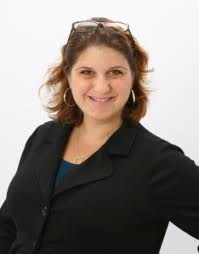
1. It says “Middle School” in your book’s subtitle, but we know how publishers are. Where would you say the advice in your book fits on the grades 4-8 continuum? Where does your personal teaching experience lie? And how would you define a Tween?
‘Tween can be such a state of mind, can it not? I think there are “tips” in my book for most any teacher across these grades. And if you don’t find something useful now, who knows what you might be teaching next year? We live in unpredictable times.
I have taught everything from 3rd graders to 12th graders. I’ve even worked with students in higher education. I began my teaching career in elementary, but I soon found my style and my desire to teach deeper content urged me to “go up!” It’s like someone yelling, “Go West!” but, well, not.
Anyway, finding the age level you are called to teach can be a little trial-and-error. I went up to 4th grade and taught the California history curriculum of Spanish Missions (yawn) and Gold Rush (cool). I taught 5th graders American History (really interesting, but a little glossed over for this age group). In upper elementary, I found I missed the complexities of a deeper curriculum.
So I went all the way up to high school, and that was somewhat satisfying in that I was able to mine themes and topics in our literature that made students realize that words and combinations of words are puzzles to be teased apart and dissected. But I soon realized that I want the best of both worlds. I wanted Shakespeare AND silliness. I wanted middle school.
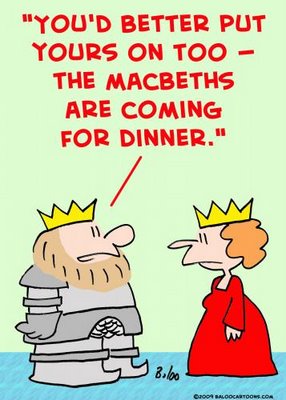
All that, of course, is about human development. But it’s also true that many of the strategies that work for one age group can be tweaked and adjusted on the developmental scale so they’re effective with older or younger kids. An 11th grader is going to be just as excited about choosing their own project as a 4th grader would be. Creating a video trailer for a book, using an iPad, is as engaging to many 5th graders as it is to an 8th grader. In other words, so many strategies in my book have application across most or all grade levels.
I will say that there is the buzz of constant spring fever that sets middle schoolers apart from other grade levels. By high school, they tend to at least have made their peace with the changes happening to them. In middle school, it’s like one day they are kids and the next day they are casting themselves in the role of mature young adult. It’s confusing for them and it’s challenging for teachers. One day a student is reading Magic Treehouse and the next it’s Hunger Games.
And you, as their teacher, have to constantly adjust your game plan to match the mood of the moment and lure that particular student on that particular day into Learning with a big “L”. Tweens are slippery beasts! Don’t you love it?
2. In the first two chapters of your book, you offer a rich array of ideas about creating a high-functioning middle grades classroom and then building a community inside that classroom. What’s the most important advice here?
You know, I didn’t believe it mattered until I saw for myself the power of creating a learning community in the classroom. I really think that without community, the deepest kind of learning cannot happen. Students have to WANT to learn. Some come to you already possessing that trait; others discover it depending on the subject or depending on the teacher. Still others struggle to ever find it. Building community in the classroom, creating shared experiences, making students feel privileged to be in this very special place: that’s what pulls out the desire to learn and learn and keep on learning.
That’s also some of why building the right physical environment is so important. We don’t have room for all the details here (but here’s something I wrote about my Banned Books strategy). But it’s about making them feel that they are in a good and exciting place that’s unlike anywhere else.
And I’m not just talking about a room design that indicates learning is going on — it has to be a place that actively lures kids into learning, even when their brains want to go elsewhere: to the divorce, the lack of food on the table at home, the breakup with a boyfriend, crushing on a girl, Minecraft vs. World of Warcraft, the upcoming recital, a parent’s fight, greenhouse gases, a brother in the military, a sister going to college. There’s so much we compete with when it comes to “attention.” Putting in a little effort to give your classroom a costume of coolness will pay you back a tenfold throughout the school year.
3. Then you move on to the (drum roll) Tween Brain. Is that a scary place? We’re pretty sure you did a lot of extra research as you prepared to write this chapter. What surprised you? You know, the big Brain Aha’s.
I drew a lot on the science behind Dr. Judy Willis’s research. She’s a neurologist turned middle school teacher and she gives magnificent tours of the adolescent brain and the science behind improving its functioning. She was one of the first people in education, at least that I heard of, talking about the flexible IQ and the plasticity of the brain. It’s a very powerful and encouraging thing to know that the brain can become more than it currently is, for anybody. Teach that fact to middle schoolers and they don’t feel like it’s too late for them. (Here’s an Edutopia video interview with Judy, who is someone I really respect.)
4. Next comes data and assessment. Let’s skip that. Just kidding. Although we’d bet some readers do. Why is it that teachers don’t get excited about assessment for learning? What’s the case you make that might change some minds about that?
It’s very releasing, if given the chance, to change how you do your own student assessments. Recently I began focusing solely on Project Based Learning, and I think I got the best from more students this year than ever before. There are lots of resources on the Web about creating PBL units with the assessments — the learning progress — built right in. Here’s one: a Top 10 Tips guide from Edutopia, edited by my fellow blogger there, Suzie Boss.
For me, PBL is not just about accelerating achievement, important as that is. PBL follows my creed as a teacher — it makes me happy. I’m not only satisfied – but happy. I love thinking about the PBL lessons. I love learning about options for doing things, options I can pass on to students. I love learning from the students themselves.
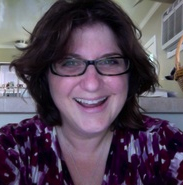
It’s not all about enthusiasm, of course, but I think excitement as a teacher can help bridge many gaps and get us through some mandated curriculum. Sometimes that’s what teachers have to do: find that hook that excites you about an otherwise boring or counterproductive obligation of a lesson. How can you find this? That’s where collaboration comes in. A single teacher can’t do it all; collaboration is what helps fuel our imagination, innovation, and inventiveness. That’s when we turn to fellow educators in our school or to our Personal Learning Network and communities of practice on the Internet. If you learn to reach out to other teachers effectively, there’s always someone out there with a good teaching idea you’ve never thought about. Look at this infographic about Connected Educators, created by my colleague Sheryl Nussbaum-Beach.
5. Last question – and 11 chapters to go! Okay, let’s do this. Give us 11 bullets, one for each remaining chapter, with the big message behind each. Then we’ll count on the newbies to check out your book for themselves if they want to survive (or just be more successful) in the coming year.
• Chapter 5 – Be transparent with students about why they must learn something and make lessons really relate to life outside of school.
• Chapter 6 – Use targeted strategies to pull out the deepest thinking from students. Help them freeze the “tickertape” going on at all times in their brain that makes connections 24/7. Help them harness that screenshot and leverage it to benefit their work.
• Chapter 7 – Give students the tools to show the highest level of content they’ve mastered by teaching them to communicate that content in high level and multiple ways. In other words, teach them how to teach.
• Chapter 8 – Build a classroom library. No matter your subject, build a classroom library that reflects your interests and you’ll find students that will relate to you and your content in a deeper way.
• Chapter 9 – Differentiate. Give choices. Honor the individuality in every classroom.
• Chapter 10 – Teach students how to question. Teach them how to develop high level questions and you will have developed an authentic assessment that recognizes the value of learning through confusion.
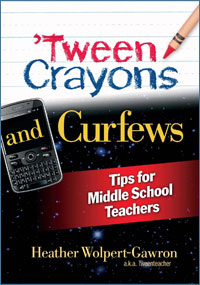
• Chapter 12 – Use specific strategies to deal with the mass of grading and feedback required to monitor students’ understanding. It can get crazy! Forgive yourself for needing to use some tricks to deal with the workload that comes along with teaching.
• Chapter 13 – Be flexible. Don’t enter teaching thinking it is a static, never-changing profession. Enter it with the knowledge that you will need to roll your dice and bend this way and that from year to year, unit to unit, and era to era. Learn to bend and you won’t break.
• Chapter 14 – Publicize your efforts. Don’t be modest. Scream from the rafters about what your students have accomplished.
• Chapter 15 – Take care of you. Pamper as needed, and whatever you do, keep learning…
Thanks, Heather. We’ll keep up with your adventures via your blogs at Edutopia and TweenTeacher!

